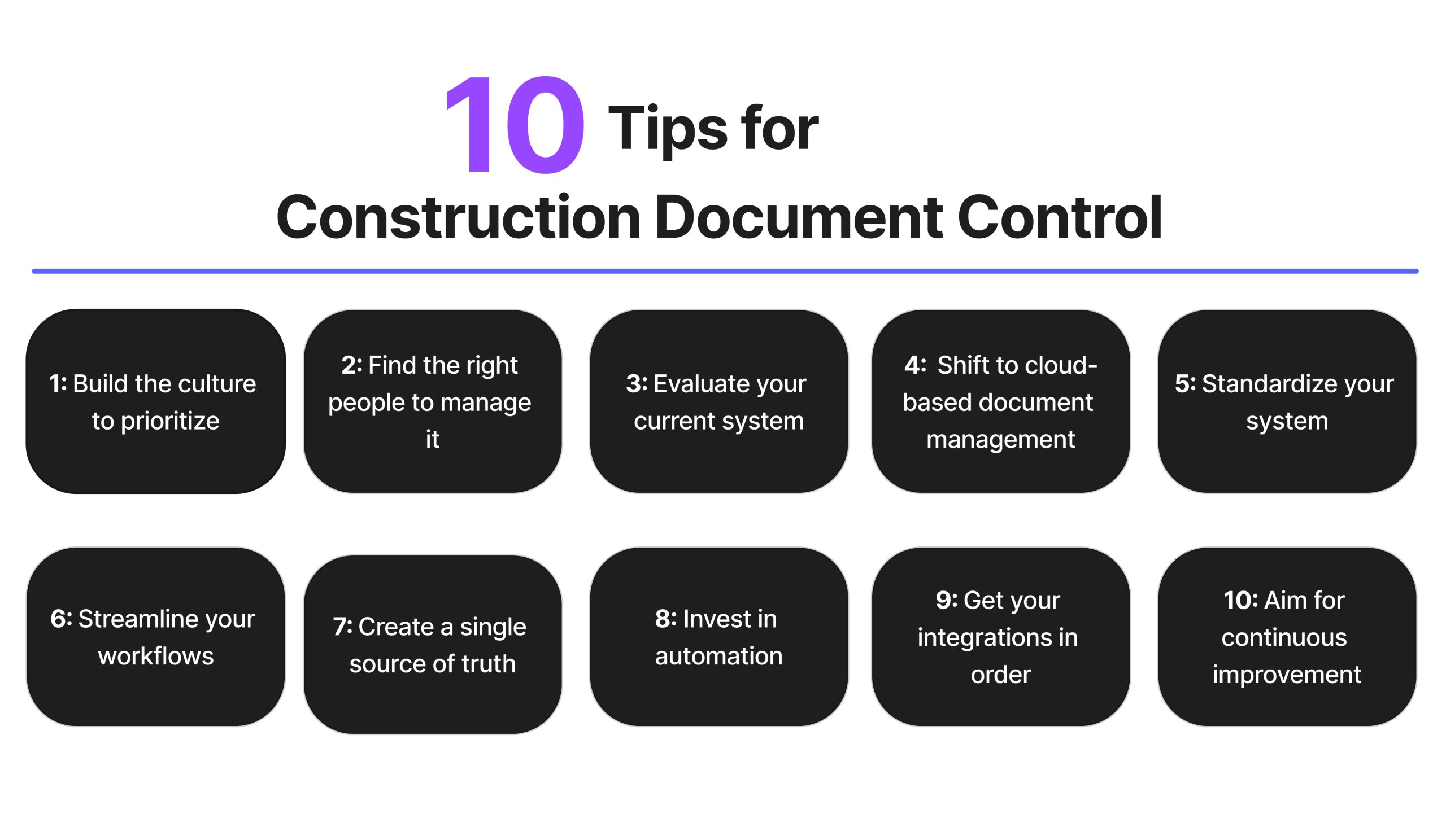Unlocking Efficiency: The Advantages of Construction Document Management Operating Systems
Unlocking Efficiency: The Advantages of Construction Document Management Operating Systems
Blog Article
Enhancing Operations Performance: Designer's Expert Techniques for Construction Document Monitoring
In the world of architectural design and building, the meticulous management of papers stands as a foundation for task success. These methods not just guarantee smooth task progression yet also hold the vital to unlocking boosted efficiency and precision in the detailed world of building file administration.
Secret Record Organization Techniques
When managing building and construction documents, one of the key methods that designers utilize is establishing a reliable and systematic organization system. This system typically involves categorizing records based on their type, such as illustrations, specs, contracts, and permits. By creating unique and clear categories, designers can promptly find certain info when required, conserving time and minimizing mistakes in the building procedure.
Within each category, engineers better arrange documents by developing subfolders or making use of numbering systems to represent modifications or versions (construction document management). This ordered structure ensures that the most existing and relevant info is conveniently available while keeping a record of modifications made throughout the project timeline
Furthermore, engineers typically make use of digital file monitoring systems that provide features like keyword search functions, version control, and gain access to constraints to improve organization and cooperation among job stakeholders. These devices simplify the file retrieval procedure, advertise real-time updates, and facilitate smooth communication, inevitably adding to the general success of the building and construction job.
Collaborative System Integration
To enhance paper management performance in building and construction jobs, architects effortlessly incorporate collective platforms to improve communication and simplify sychronisation among project stakeholders. By leveraging collective platforms such as task monitoring software, cloud-based storage systems, and interaction tools, architects can create a centralized hub for all project-related documents and interaction channels. These systems permit employee to access, review, and work together on documents in real-time, decreasing delays and the threat of errors related to conventional paper administration approaches.
Collective system assimilation likewise cultivates openness and responsibility within the project team, as all stakeholders have visibility right into the current job updates and revisions. By centralizing interaction and paper sharing, architects can guarantee that all staff member are functioning from the most current info, lessening the opportunities of conflicts or misunderstandings emerging due to out-of-date documents.
Moreover, collaborative platforms make it possible for smooth collaboration in between architects, specialists, clients, and various other task stakeholders, advertising a much more cohesive and effective project process. By breaking down communication barriers and facilitating information exchange, architects can drive performance and technology in building and construction projects, eventually bring about successful job results.
Version Control Finest Practices
Carrying out efficient version control techniques is vital for maintaining paper precision and consistency in building and construction projects. By establishing a clear system for taking care of revisions, task groups can guarantee that everyone is functioning from the most up-to-date documents, minimizing the danger of errors and discrepancies throughout the construction stage.
One of the key best practices for version control is to appoint special identifiers to each record version. This can be attained by making use of a numbering system or day stamp that plainly shows the order of revisions. By clearly labeling each version, staff member can easily track the progression of the file and determine the most current variation.

Automation Tools for Performance

Document control software application, like Procore or PlanGrid, systematizes task paperwork, making it conveniently available to all stakeholders. These platforms permit real-time cooperation, version control, and automated back-ups, protecting versus information loss. Furthermore, Structure Information Modeling Bonuses (BIM) software automates the generation of building and construction illustrations and makes certain that adjustments are integrated across all relevant papers.
Incorporating automation tools with cloud storage space services additionally boosts accessibility and safety. By automating the file monitoring procedure, job teams can concentrate their effort and time on value-adding activities, inevitably improving performance and project end results.
Secure Information Administration Solutions
Effectively managing and guarding job data is critical in the construction sector to ensure confidentiality and integrity throughout the job lifecycle. Building companies can utilize encrypted cloud storage solutions to firmly keep and share project documents with authorized employees.
Moreover, using electronic civil liberties management (DRM) devices includes an added layer of safety by stopping the unauthorized distribution or duplication of job records. Normal information backups are necessary to alleviate the threat of data loss as a result of unanticipated situations like hardware failings or cyber-attacks. Collective systems with built-in safety attributes allow seamless interaction and file sharing amongst job staff member while keeping data honesty.
Verdict
In conclusion, carrying out essential paper Read More Here organization methods, integrating collaborative systems, practicing version control finest techniques, making use of automation tools, and adopting safe and secure data monitoring remedies are crucial methods for improving operations efficiency in building record management. These expert approaches can streamline processes, enhance communication, make certain accuracy, and keep information protection throughout the building and construction project lifecycle.
In the world of building style and building and construction, the careful management of documents stands as a cornerstone for job success. These methods not only make certain smooth task development yet likewise hold the key to unlocking boosted performance and precision in the complex world of building document monitoring.
To maximize file management effectiveness in building projects, designers perfectly integrate collaborative platforms to enhance interaction and improve sychronisation amongst job stakeholders. These platforms permit team participants to gain access to, Web Site testimonial, and collaborate on files in real-time, lowering hold-ups and the danger of errors linked with traditional record administration approaches.
Making use of automation tools in building and construction paper monitoring significantly enhances efficiency and simplifies processes for project groups. construction document management.
Report this page